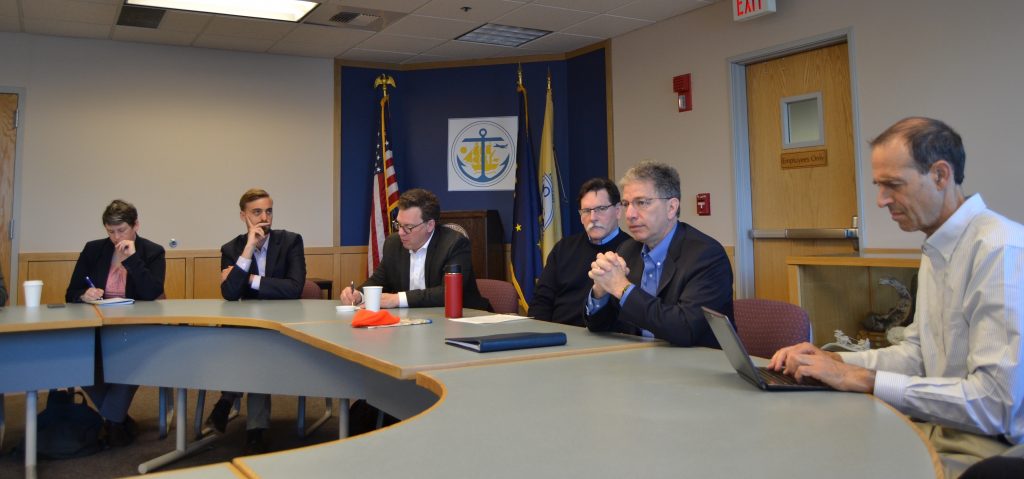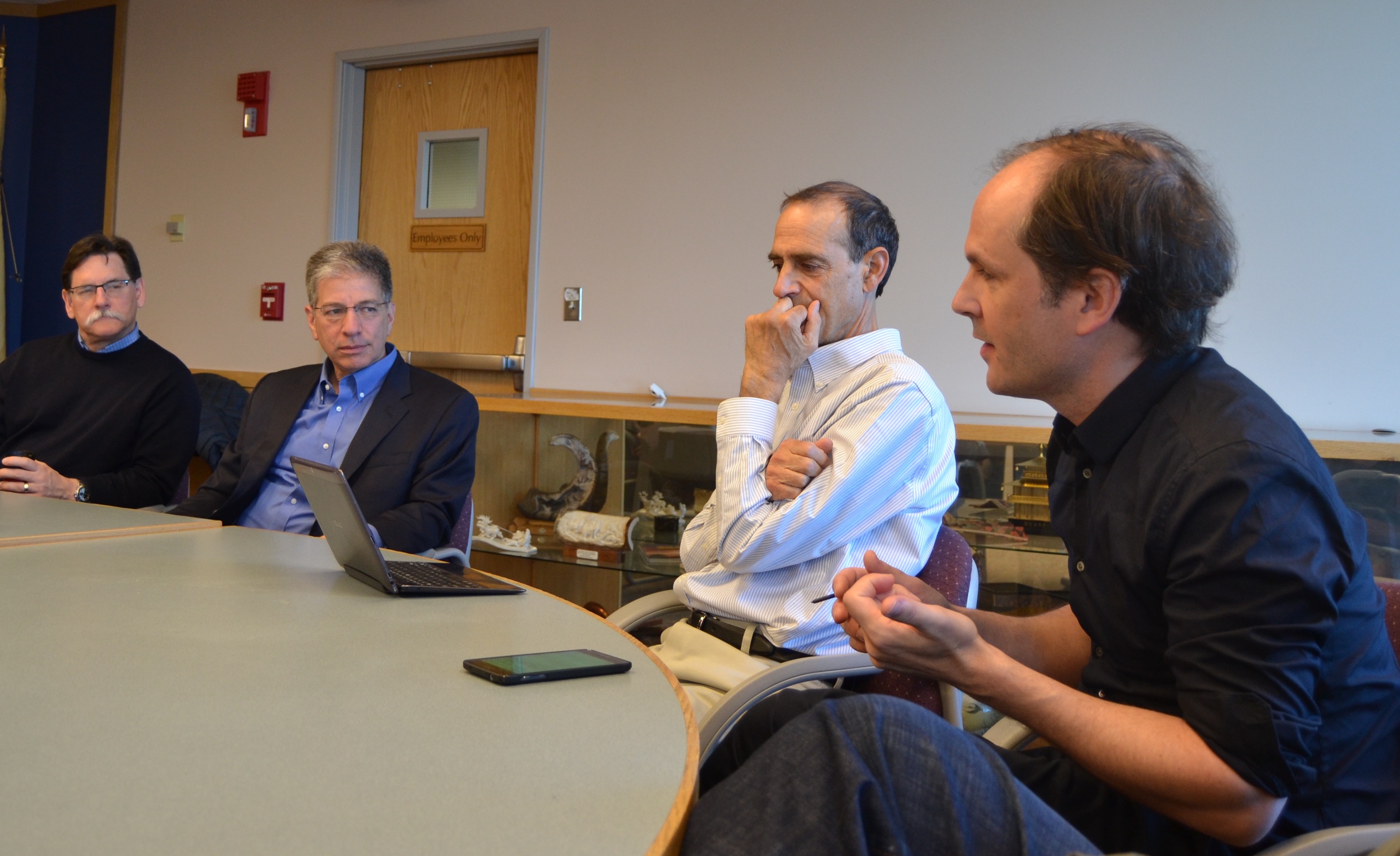Last week, the Arctic PIRE team gathered in Anchorage, Alaska, to share ongoing research, to continue developing the Arctic Urban Sustainability Index (AUSI), and to meet with community stakeholders to gain a better understanding of what is important to consider when evaluating urban sustainability in the Arctic, and also to understand what the most important information or metrics that researchers can provide to policymakers and community leaders. Below are some of the highlights of meetings with stakeholders in Anchorage.

Mayor of Anchorage Ethan Berkowitz defined sustainability for Anchorage as a city that is ready, connected, and inclusive, but also as an ancient idea that has long been practiced by Alaska Natives. For Alaskans, both native and non-native, self-sufficiency is an important aspect of sustainability and a point of pride, but also a real challenge- Alaska relies on a colonial model of exporting its raw materials and importing much of its work force. Mayor Berkowitz emphasized the need to invest in human capital, to increase local (renewable) energy as an opportunity to create self-sufficiency and also create local jobs. Finally, Mayor Berkowitz highlighted the need for more data, and more metrics, saying that there is a dearth of good city-level data that can inform good policy and practice.
Dr. Mara Kimmel, the First Lady of Anchorage, shared her aspirations and ongoing work in building resilience in Anchorage. Dr. Kimmel talked about creating a resilient city, but also one that is welcoming and inclusive for both indigenous peoples and immigrants. Dr. Kimmel suggested that policymakers and planners must work more directly with scientists who can provide the data for better decision-making, and that research questions should come from the communities that need the data.
Andy Baker, engineer and owner of Your Clean Energy, shared his experience working on renewable energy projects in the Anchorage area over the last ten years. Baker talked about the importance of the 2010 net metering policy in spurring renewable energy development in Alaska. Baker also highlighted his work on the Alaska SeaLife Center heat pump system that uses Resurrection Bay to heat both the aquariums and the space at the Center. Baker echoed others when he highlighted the importance of investing in education in Anchorage and beyond, particularly at a university level,
Steve Colt, a professor of economics at Alaska Pacific University, has a background in electric utilities and working on renewable energy and distributed energy systems in Alaska. He talked about some of the challenges of renewable energy in Alaska related to policy, infrastructure, and implementation, including multiple energy players in Anchorage and Fairbanks and the resultant fractured system that requires coordination. Colt also emphasized the need to expand the energy discussion beyond electricity generation to include heat and transportation, and suggested that the transportation sector may present the best opportunities for gains in sustainable energy.
Kirk Rose, Executive Director of the Anchorage Community Land Trust, talked about working on revitalization, particularly in the Mountain View neighborhood of Anchorage, where homes were built originally to accommodate temporary pipeline workers, and are now home to many of the city’s low-income residents. Rose emphasized the important role of the private sector in sustainable community development in Mountain View and beyond. The Anchorage Community Land Trust has worked with the local community on planning and development, and has also worked to purchase some of the most blighted properties to redevelop for businesses and enterprises that benefit the community. Rose emphasized that this is not charity work, but rather illustrates the opportunities for the private sector, which to date includes a credit union, health clinic, and office space for NGOs and community groups.
Yaari Walker, Cultural Program Specialist at the Alaska Native Heritage Center led a tour of some of the traditional structures used by Alaska Natives, while sharing some of the cultural history and her own personal SLI Yupik heritage. Walker leant important perspective to the culture and identity of Alaska Natives, and the importance of considering the way culture impacts Alaska Natives living in urban areas such as Anchorage and Fairbanks.
Dawn Biddison, Museum Specialist at the Smithsonian Arctic Studies Center gave a brief history of the experience of Alaska Natives under colonialism first by the Russians and later by the Americans. Biddison particularly highlighted subsistence as both a practical way of life and an expression of culture and history, and a thriving practice even among urban Alaska. She then led us through the new Arctic Studies hall which displays cultural objects that were carefully curated and informed by Alaska Native elders. The Center also allows primary research by Alaska Natives, has several interactive video displays to explain objects in the exhibit, and has created a series of instructional videos demonstrating traditional method for things like basket-weaving and sewing with sinew.
